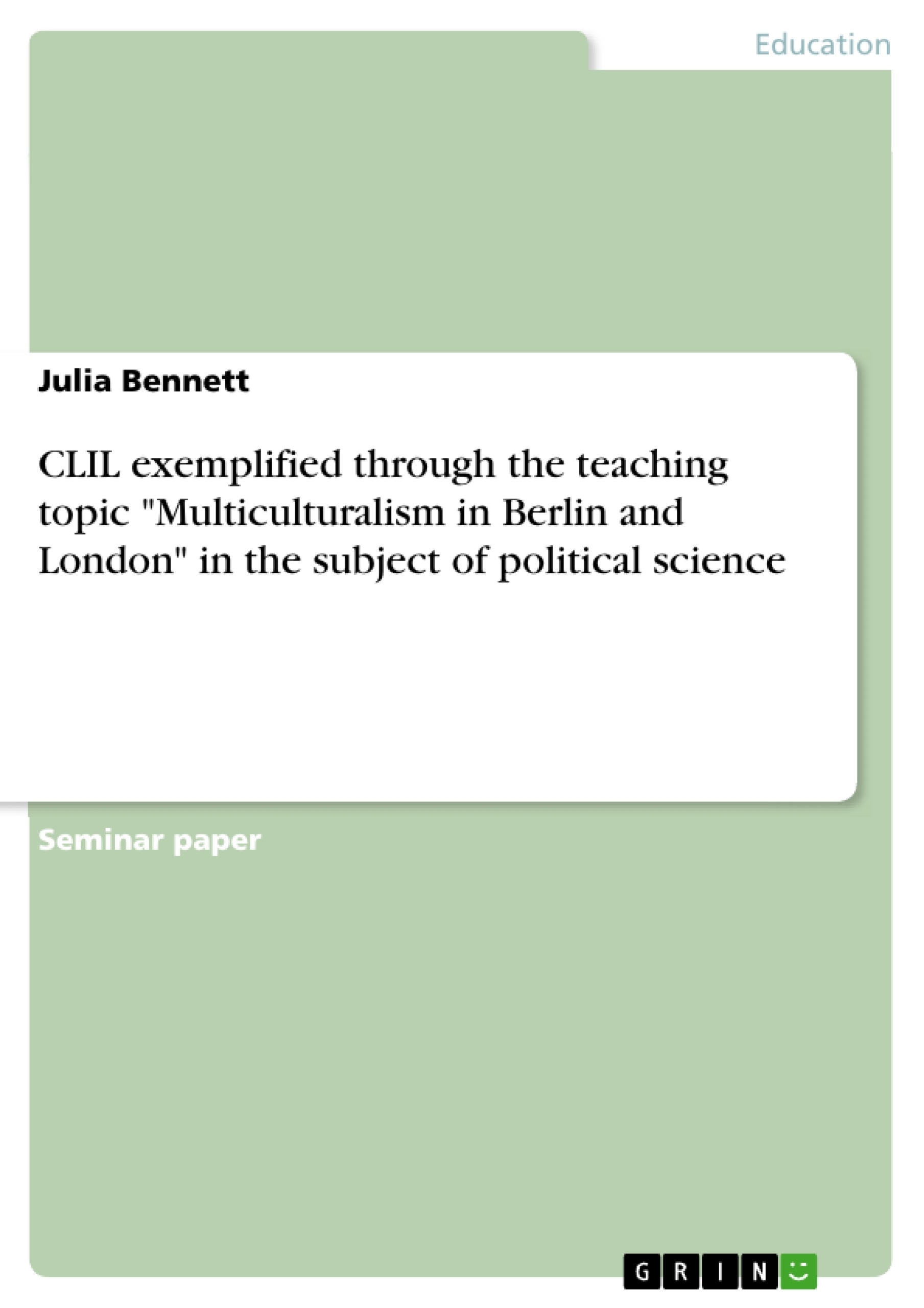1. Introduction
In this paper, I would like to clarify the importance of bilingual teaching as an innovative and
modern development in scholastic education. I would like to do so on using as an example of a
lesson I developed on “multiculturalism in Berlin and London” which could be subject matter for
a 9th grade political science class in Germany.
A requirement for the topic of this paper was to combine the two courses of module 5b ("An
Excursion to London," and "Introduction to Bilingual Teaching"), which I attended during
summer semester 2009 and winter semester of 2009/ 2010, with my content subject, political
science.
At the beginning of my work, I would like to define the term "Content and Language Integrated
Learning" (CLIL) and thus point out the inconsistency in the usage of this term. Furthermore, I
would like to focus on various justifications for bilingual teaching. In this context it is important
to examine and illustrate the importance, potential, and future prospects of CLIL. In addition, this
work demonstrates the objectives of bilingual teaching. The concept of bilingual teaching is
supported by the paradigm of Language Awareness which will be discussed in detail in this
paper.
Another focus of this work will be to put CLIL into a suitable context within the chosen topic of
multiculturalism in the European metropolises of London and Berlin. The broad term
“multiculturalism” will be defined in advance in this work in order to avoid misunderstandings.
Moreover, I will present some material for bilingual political science that I partly used as a
becoming teacher during my internship in a German High School in the city of Kassel. This
material mostly consists of empirical data about the ethnic population structure in London and
Berlin that should be analyzed and evaluated by the students.
Table of Contents
1. Introduction
2. Appeal for Content and Language Integrated Learning (CLIL)
2.1. CLIL: A definition
2.2. Reasons for supporting CLIL: A learning psychological and (subject-)
didactical view
2.3. CLIL: Objectives
2.4. Language Awareness and multilingualism
3. The topic 'Multiculturalism' in bilingual political science class
3.1. Multiculturalism: A definition
3.2. Ethnic population structure in Berlin, Germany
3.3. Ethnic population structure in London, England
3.4. Comparison of the Ethnic Population Structure of Berlin and London
4. Conclusion
5. References
- Quote paper
- Julia Bennett (Author), 2010, CLIL exemplified through the teaching topic "Multiculturalism in Berlin and London" in the subject of political science, Munich, GRIN Verlag, https://www.grin.com/document/160134
-

-

-

-
Upload your own papers! Earn money and win an iPhone X. -

-
Upload your own papers! Earn money and win an iPhone X. -

-
Upload your own papers! Earn money and win an iPhone X. -

-
Upload your own papers! Earn money and win an iPhone X. -

-
Upload your own papers! Earn money and win an iPhone X. -

-
Upload your own papers! Earn money and win an iPhone X. -

-
Upload your own papers! Earn money and win an iPhone X.

